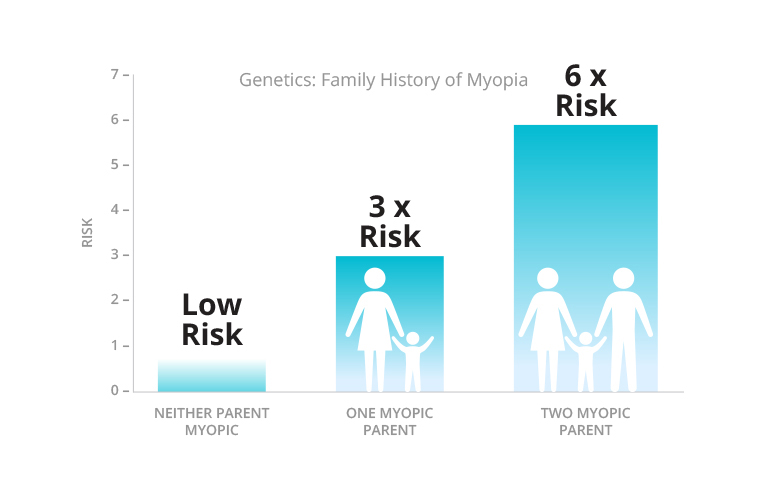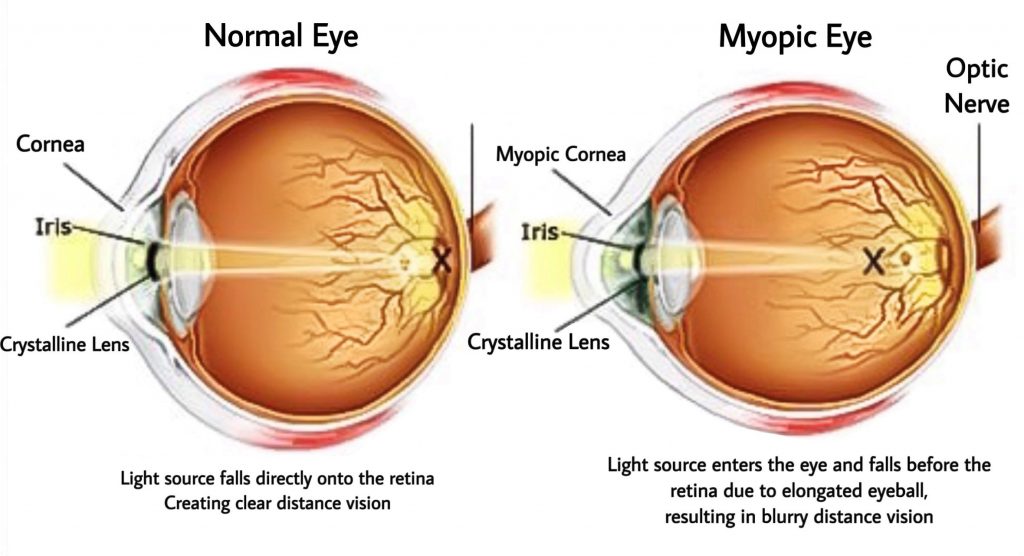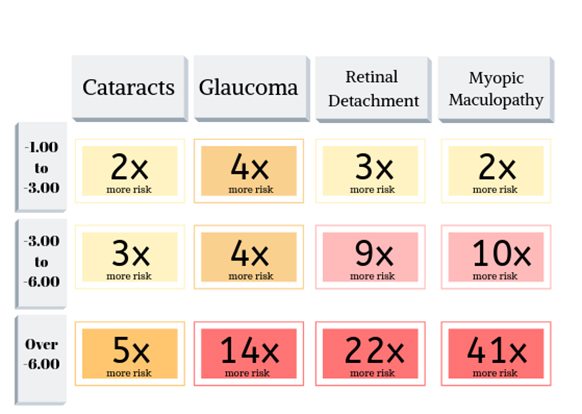Myopia
- Commonly known as short-sightedness
- Happens when eyeball is too long, crystalline lenses or cornea becomes too thick
- Genetic factors play a role in development of myopia, the risk of a child developing myopia is higher when one or both parents are myopic compared to a child whose parents are not.
- Habits such as large amount of close work and moving object reading, video and smartphone games, lead to a mal-adaptation of the visual system. Thus leading to irreversible physical changes, such as eyeball elongation.
- Low exposure to natural light increases the chance of a child developing myopia, and furthermore determines how rapidly it progresses (Johannes Gutenberg Universitaet Mainz, 2016).

An Important Consequence of Myopia
- Exponential increased risk of secondary eye diseases
- It is predicted that by 2050 around half the world’s population will be myopic (Holden et al. 2016)
- Early detection and correction for children may arrest progress.
- Management of myopia is purely slowing, or at best, halting progression. Awareness of environmental risks and appropriate behaviours can also prevent/slow progression of myopia.


Studies on myopia demonstrated association of high myopia with myopic parents, environmental factors and reading habits.
The chart on the left demonstrates the estimated risks of having these sight-threatening eye diseases according to the eye refractive errors.
Myopia Control Options
It is important to note that no one treatment is suitable for all patients. After a comprehensive eye exam, a personalized treatment plan will be customised for every patients, depending on their benefit, needs and lifestyle by your Optometrist.





